 |
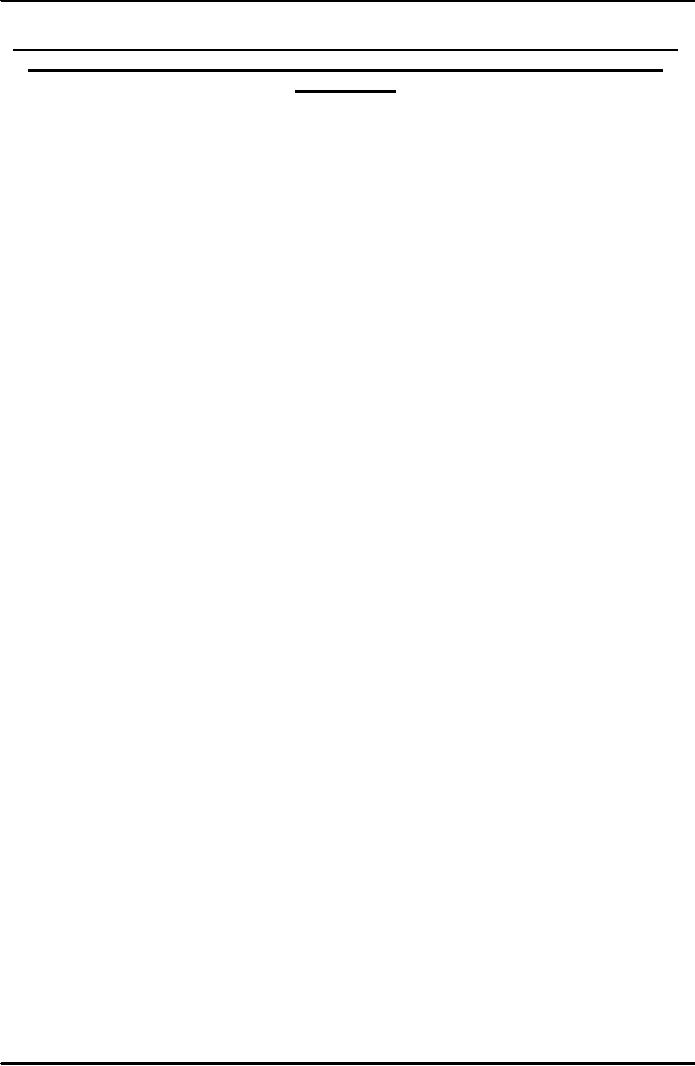
Change
Management MGMT625
VU
Lesson
# 34
IMPLEMENTATION
AND STRATEGIC CHANGE:
CONSTRAINING FORCES IN
THE
IMPLEMENTATION OF STRATEGIC CHANGE (CASE
STUDY OF XYZ
COMPANY)
In
this lesson we will continue
our discussion about the
implementation of strategic change. Again
at
strategic
formulation, one can get
extraordinary type of vision and mission
prototypes but at
implementation
level the results are often
quite otherwise. The recent surveys
also exhibit the
similar
conclusions
about the success pattern of strategy
formulation-execution mechanism.
Therefore this is an
attempt
for analyzing the situation
realistically by dealing various
scenarios in generic terms.
According
to
an author, the following variables
hamper the execution of strategic
change.
Systems
(a)
Misdirected reward and
evaluation
In
organizations, the actions of change in
strategies, particularly at operational
level, depend on linkage
between
performance and reward systems.
One thing which happened in
most cases is that
the
organizations
do not have suitable criteria
for performance evaluation. It means
the organizations do
not
have
a suitable portfolio of attributes at
different hierarchical levels
which could measure
the
performances.
In this scenario, organizations
may face inequity and
injustice which lead them
into
anarchy
and conflict. However we see
various efforts that have
been made to link reward
with
performance
and to induce managers to make decisions
that are in the long-term interest of
the
enterprise.
At
Ford Company, for example,
more emphasis is given to stock grants
that reward the achievement of
5-year
objectives. These criteria
include not only return on
equity but also measures
such as customer
satisfaction,
involvement of employees, and product
quality. Furthermore, performance is
compared
with
that of competitors. For instance, even
though quality may have
improved at Ford, if more
quality
improvements
have been made by a competitor,
this will be held against
Ford's managers if
their
quality
improvements have not been
sufficient.
(b)
Oppressive control systems
Oppressive
control system means a
system which is tightly
managed and where element of
exploitation
is
very high. The control
system, in an organization, has several
directions. In broad terms we
can
divide
them into two types; tangible
control systems and
intangible control systems.
Most controls are
designed
for specific things:
policies, wages and salaries,
employee selection and training, research
and
development,
product quality, costs,
pricing, capital expenditures,
cash, and other areas where
an
organization
wishes performance to conform to plans.
These controls are tangible
or visible in nature
where
traditional approaches are to be
applied such as budget
summaries and other
financial analyses.
Many
other types of controls are dependent on
intra-organizational relationships, leadership
styles;
organizational
learning and culture based established
patterns. These are intangibles or
invisible in
nature
and where modern attitudinal and
behavioral approaches are to be
applied. For
instance,
decentralization
of authority - especially in product or
territorial divisions - on the one hand
creates
semi-independent
units but also empowerment and
smooth relationships between various
levels in an
organizational
hierarchy. The point here is
that control should be on
invisibles as equal as with
visibles
which
certainly is an important objective to
gauge the success in change
implementation. It must do
more
than say that a management
group has followed
"generally accepted standards of
management
control."
The
concept of the modern organization as it exists
today in the United States
originated with Pierre S.
Du
Pont and Alfred P. Sloan. It was
Sloan who structured General
Motors with an emphasis
on
centralized
staff and decentralized operation.
Policy-making and operations were distinguished.
Control
89
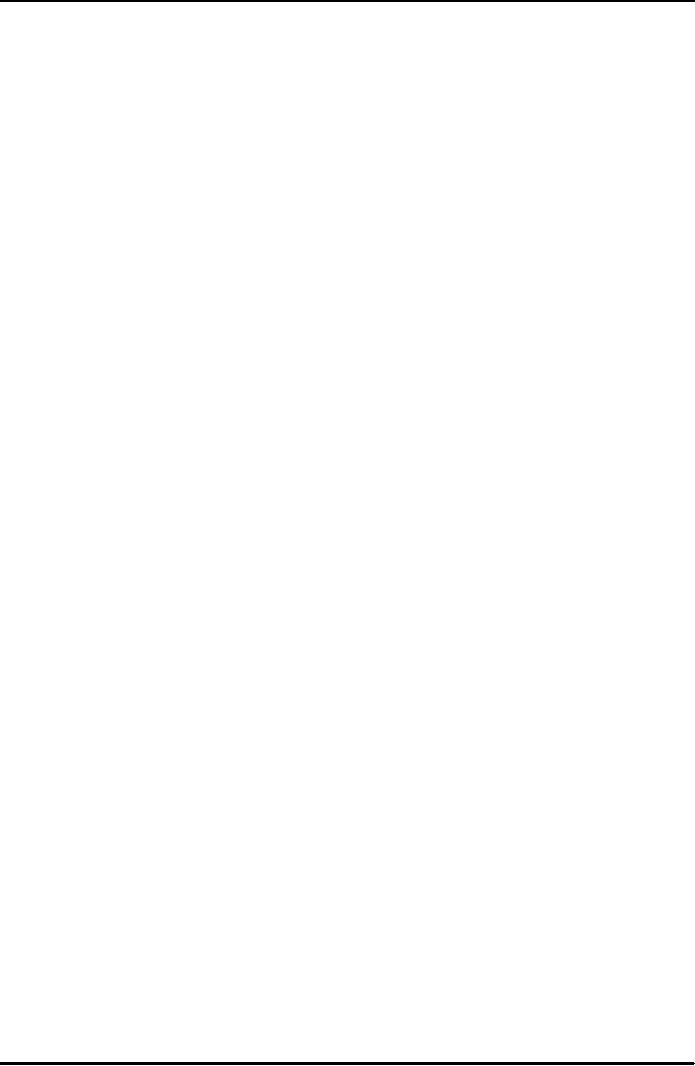
Change
Management MGMT625
VU
was
maintained through a number of control
techniques and budgets. This kind of
organization worked
remarkably
well and is still the
predominant way large
enterprises are organized
today. However, new
technology,
new demands in the environment and a
new work force call
for a new kind of
organization
based
on information.
(c)
Inflexible budgeting
systems
Budgeting
is the formulation of plans for a given
future period in numerical
terms. As such, budgets
are
statements
of anticipated results, either in
financial terms - as in revenue and
expense and capital
budgets
or in non-financial terms such as in
budgets of direct labor-hours, materials,
physical sales
volume,
or units of production. It has
sometimes been said, for
example, that financial
budgets
represent
the "dollarizing" of plans.
Perhaps
inflexibility is the greatest danger in budgets.
Even if budgeting is not
used to replace
managing,
the reduction of plans to numerical terms
gives them a kind of misleading
definiteness. It is
entirely
possible that events will
prove that a larger amount
should be spent for this
kind of labor or that
kind
of material and a smaller amount for another or
that sale will exceed or
fall below the amount
forecast.
Such differences may make a
budget obsolete almost as soon as it is
formulated; if managers
must
stay within the straitjacket of
their budgets in the face of
events like these, the
usefulness of
budgets
is reduced or nullified. This is
especially true when budgets
are made for long periods
in
advance.
Budgeting
is never more perfect than
the planning behind it, and
plans - especially long-range plans
are
subject
to the imperfections caused by change and
uncertainty. Such uncertainty or
sometimes change
in
strategy can be incorporated if budgets
are inflexible and easily be reorganized.
However, this
phenomenon
also depends on the degree of
centralization.
(d)
Arbitrary cost allocation
systems
This
variable, basically, relates to
decision making pattern. The
questions here are that
whether cost
allocation
is based on rational basis or
emotional or political or either
professional basis. So it is a
decision
making phenomena either
participative of limited to few
organizational political elites.
This
definitely
leads the strategic change towards
failure.
At
rational and sometimes
professional level we have cost
valuation technique for
efficient cost
allocation
which is called cost-benefit analysis. It
seeks the best ratio of
benefits and costs; this
means,
for
example, finding the least
costly way of reaching an
objective or getting the greatest
value for given
expenditures.
The major features of cost
effectiveness analysis are that it
focuses on the results of a
program,
helps weigh the potential benefits of
each alternative against its
potential cost, and involves
a
comparison
of the alternatives in terms of the
overall advantages.
(e)
Overly Rigid, formal
planning system
Planning
involves selecting missions and
objectives and the actions to achieve them; it
requires
decision
making that is choosing from
among alternative future courses of
action. Plans thus provide
a
rational
approach to achieving pre-selected
objectives. Planning also
strongly implies
managerial
innovation
rather than rigidity and bases
our decisions on purpose, knowledge, and
considered
estimates.
Planning
bridges the gap from where we are to where we
want to go. Without plans, the
organizations
are
at high risk or chance. But
without flexible planning
system, an organization, if not in slump,
is at
stagnation.
The second thing is that
planning and controlling are inseparable
or plans thus furnish the
standards
of control. So, efficient
control system depends on
flexible planning and
decentralized
structure.
90
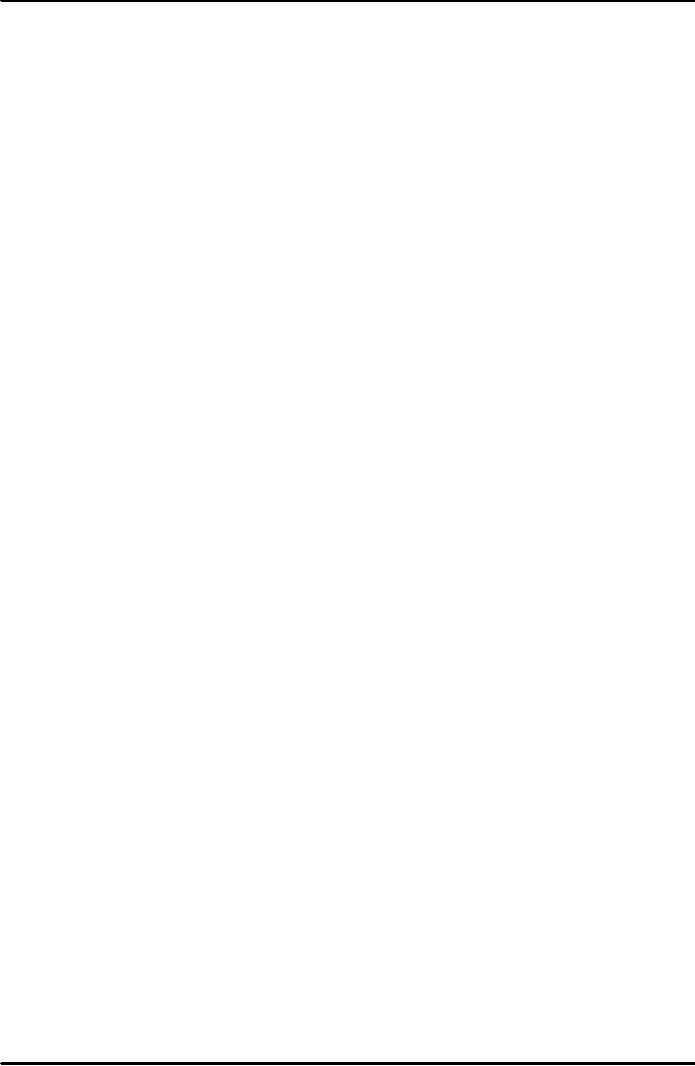
Change
Management MGMT625
VU
Structures
(a)
Too many hierarchical
levels
Organization
levels exist when there is a
limit to the number of
persons a manager can
supervise
effectively, even though
this limit varies depending
on situations. In every
organization,
it must be decided how many
subordinates a superior can manage. When
an
organization
go for a large in size or for
empire building, it often no
longer be able serves
his
target
customer or stakeholders but in trying to
serve itself. More broadly,
there are three
problems
associated with large
hierarchical levels:
1.
It is an expensive option
2.
It complicates the communication
process
3.
Finally, it complicates the
planning and control systems
Then
what should be the ideals
figures? For instance, the
prominent British consultant
Lyndall
Urwick
found that "the ideal
number of subordinates for all
superior authorities ... to be
four,"
while
"at the lowest level of
organization, where what is
delegated is responsibility for
the
performance
of specific tasks and not
for the supervision of
others, the number may be
eight or
twelve."
While,
in a survey of 100 large companies made
by the American Management
Association,
the
number of executives reporting to
the presidents varied from one to
twenty-four, and only
twenty-six
presidents had six or fewer subordinates;
the median number was nine.
In forty-one
smaller
companies surveyed, twenty-five of the
presidents supervised seven or
more
subordinates,
and the most common number
was eight. Comparable results
were found in other
studies.
In
our societal perspective,
these figures are different
from ideals and also form models
of
developed
societies. For instance at managerial
stage, we have 6 hierarchical
levels in our
public
sector organizations as compared to 3 or 4 in average
western models. And at
non-
managerial
stage, we have 16 hierarchical
levels as contrast with
western models that
generally
have
6-8 levels. So, what
the outcome is:
mal-governance and least development.
Therefore in
90's,
we have seen the trend of
rightsizing and downsizing with
parallel of cost cuttings.
(b)
Overly narrow span of
control
According
to classical school approach, the
term span of management deals
with specifying
numbers
of subordinates for an effective span. In
other words, there is a
limit to the number
of
subordinates
a manager can effectively supervise, but
the exact number will depend
on the
impact
of underlying factors. So,
what should be the ideal? It
depends upon some
essential
factors
like:
1.
Vision
and Missions
2.
Strategic
Change (Rate of Change)
3.
Hierarchical
Levels
4.
Organizational
Planning
5.
Training
6.
Technology
7.
Delegation
of Authority and Responsibility
8.
Communication
Practices and Techniques
9.
Organizational
Culture, etc.
91
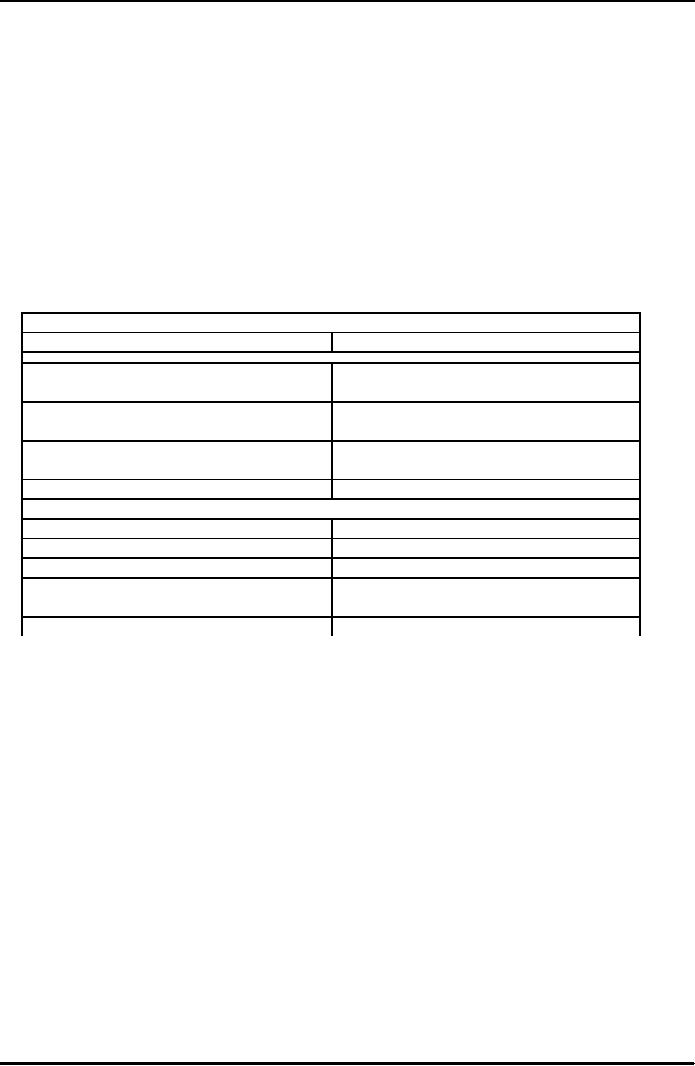
Change
Management MGMT625
VU
We
have two schools of thoughts
about the optimality of span
of control. One is the
classical
school
of thought which prescribed that at
upper and top levels the
span is from three to
seven
or
eight subordinates. However,
more recent views come from
operational-management
theorists
who have beloved on open
ended approach that are
based many underlying
variables
in
a management situation. But in a very
real sense, none of these
studies is truly indicative of
the
actual span of management.
For one thing, they measure
the span only at or near the
top of
an
enterprise. Secondly, it is probable
that spans below the
top executive are much
narrower.
According
to a study of more than 100 companies of
all sizes revealed a much
narrower span
in
the middle levels of management
than at the top.
While,
in broader term we can divide the
management span into two
types: one is wide and
the
other
is narrow. A wide span of management is
associated with few
organizational levels; a
narrow
span, with many levels.
The advantages and disadvantage of the
both categories are
given
in the following
table:
Organization
with Narrow Span
ADVANTAGES
DISADVANTAGES
�
Close supervision
�
Many levels of
management
�
Close control
�
High costs due to many
levels
�
Fast communication between
�
Superiors tend to get too involved
in
subordinates
and superiors
subordinates
work
�
Excessive distance between
lowest
level
and top level
Organization
with Wide Span
ADVANTAGES
DISADVANTAGES
�
Superiors are forced to delegate
�
Danger of superior's loss of
control
�
Clear policies must be
made
�
Requires exceptional quality of
managers
�
Subordinates must be carefully
selected
�
Tendency of overloaded superiors
to
become
decision bottlenecks
(c)
Responsibility without
authority
Although
research still does not
address all key the
key managerial activities
such as
structuring
the organization or clarifying of
authority-responsibility relationships
because of
person-to-person
variability and that require a
comprehensive look at what
successful and
effective
managers really do. But in
general, the authority
responsibility mismatch
has
considered
one of biggest hindrance in managerial
success. It has normally considered
more as
structural
phenomena rather than
individualistic. For instance, in
most of the cases
managers
are
assumed to be responsible instead of
appropriately authoritative. One
reason for that is
the
geographical
dispersion between authority
structure and responsibility structure.
So, the point
is
that there must be
equilibrium between manager's
functional authority and
perceived
responsibility.
Some recent research studies
have focused this phenomenon
under the domain
of
total managerial job.
(d)
Top down management
system
It
is the most traditional and
oldest style of management where
management flows from people
at
higher levels to those at lower
levels in organizational hierarchy.
This kind of
management
exists
especially in organizations with an
authoritarian atmosphere. Therefore in
today's
92
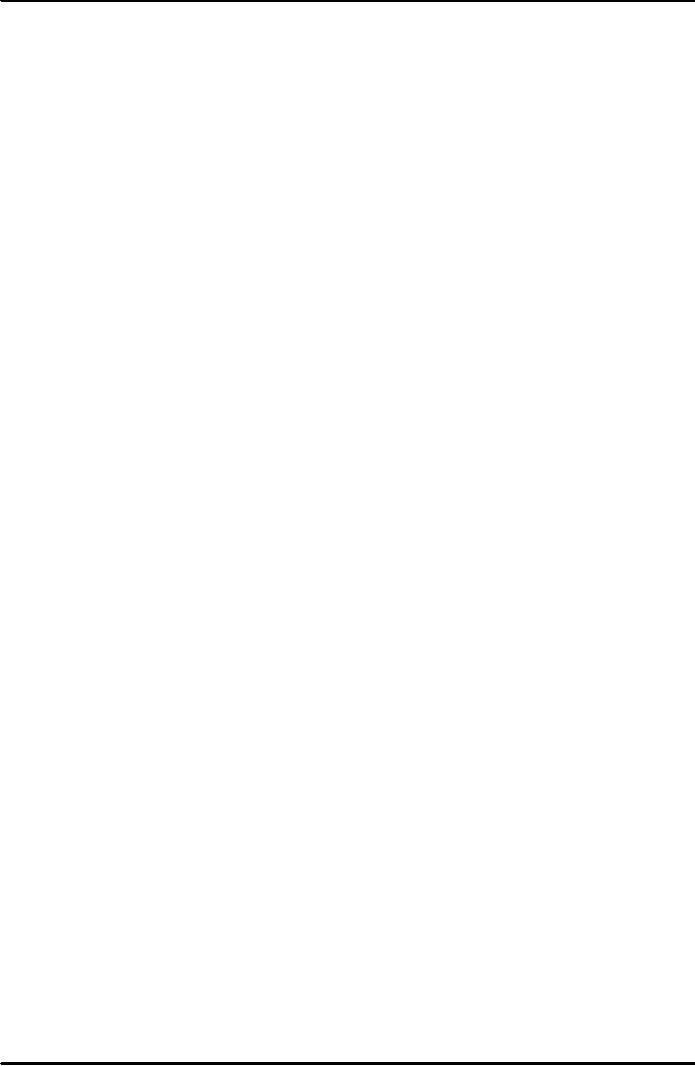
Change
Management MGMT625
VU
context,
it has been much disliked
form of organizational structure.
Most of the time,
the
strategy,
goals, and objectives manipulation is
retained at the higher level
of organization.
Even
middle level managers are
working as operators. In fact, it is
commonly argued that
effective
management has to start with
subordinate otherwise problem will
develop.
In
top down communication,
information is often lost or
distorted as it came down
the chain of
command.
Top management issuance of policies and
procedures does not ensure
prompt
communication.
Consequently, an effective feedback
system is required for
finding out
whether
information was perceived as intended by
the top management. The
possible
consequences
are:
1.
Least
motivated and least involved
employees
2.
Mechanistic
organizational environment
3.
Stagnant
efficiency
4.
Poor
coordination between operation of
functional level and higher
level etc..
(e)
Restricted communication
channels
It
is generally considered in traditional
communication structures that
top management is the
most
informed segment in an organization. Is
this assumption, particularly in
modern context,
is
a myth or reality? Modern
research now argued that
middle level and operational
level
managers
are the more informed people
in an organization. Because they
are getting
information
simultaneously from multiple
channels such as backward
channels, forward
channels,
and also through organizational
hierarchical channels. Therefore,
the point here is
that,
an open ended organization is more
intelligent and interactive with
the environment.
(f)
Lack of accountability
Although
employees are empowered to make decisions
they believe will benefit
the
organization,
they must also be held
accountable and responsible for results.
Accountability
phenomena
works at two levels: at
extraneous level and at internal
level.
At
extraneous level, the
organization held accountable to
individual, to a group or groups
of
people,
to government, and ultimately to society.
This is reactionary and legal
way of
accountability.
At intra-organizational level, there
must be some restraints or checks
that can
held
accountable to individual level and
department's level, at business
level and at corporate
level.
The objective here is that,
morality should be generated
form within the
organization.
J.
O. McKinsey came to the
conclusion that a business
enterprise should periodically make
a
"management
audit," an appraisal of the enterprise in
all its aspects in the
light of its present
and
probable future environment.
Although McKinsey called
this appraisal a management
audit,
it is actually an audit of the
entire enterprise.
(g)
Bloated (over-fed) staff
functions
In
management literature, still there
are number of obstacles
which require some
deep
extrication
like the problem of semantics.
The terms such as
"organization," "line and
staff,"
"authority,"
"responsibility," and "policies," are
exemplified by variety of meanings.
And much
confusion
also has among managers as to
what these terms are.
So, what the roles of
line and
staff
are? This is one of several
areas of management that causes
more difficulties,
more
friction,
and more loss of time and
effectiveness.
93
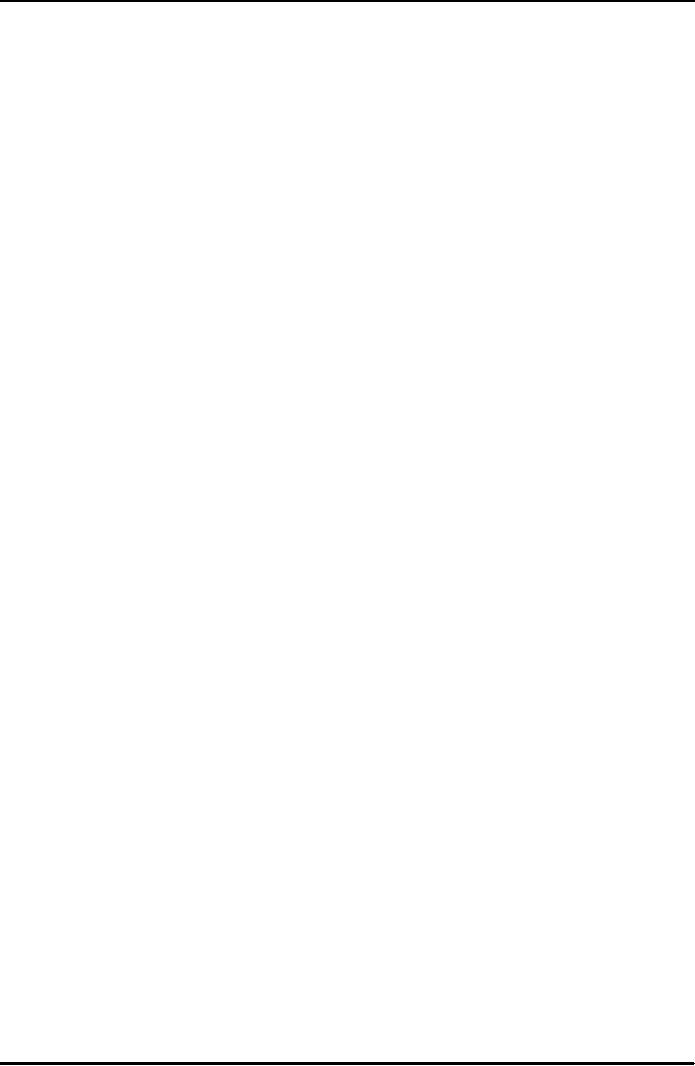
Change
Management MGMT625
VU
1One
widely held view of line and
staff is that line functions
are those that have direct
impact
on
the accomplishment of the
objectives of the enterprise. On
the other hand, staff
functions
are
those that help the line
persons work most
effectively in accomplishing the
objectives. The
people
who hold to this view
almost invariably classify
production and sales (and
sometimes
finance)
as line functions and purchasing,
accounting, personnel, plant
maintenance, and
quality
control as staff functions.
According to an another classification,
purchase, production,
sales
departments are under line
authority domain and accounting,
finance, personnel,
plant
maintenance,
and quality control are
under staff authority
domain.
The
point here is that, the
organization should go first to
differentiate between line
authorities
and
staff authorities and form an appropriate
model so that the problems
of overlapping and
over
feeding could be
avoided.
Strategic
Direction
(a)
Absence of innovation goals
Usually,
innovation means the
creation and usage of the
ideas. In an organization, this
can
mean
a new product, a new
service, or a new way of
doing things as Peter
Drucker regards the
two
basic business functions as
innovation (for example, the
creation of new goods or
services)
and
marketing. A business can scarcely
survive without at least one of these
functions and
preferably
both. On contrary, innovations
may be very risky and are,
at times, not
successful.
Organizations
fostering innovation are
attributed with the
following ways:
1.
Appreciation
and rewarding for new
ideas
2.
Development
of tolerance for
failure
3.
Operate
with few and simple
rules
4.
Hampers
to innovation, such as excessive planning
or intolerance of mistakes is
eliminated
5.
Information
sharing is greatly encouraged
6.
Processes,
Procedures, and guidelines foster
innovation.
7.
Establish
close relationships with
customers
8.
Technology
sharing with others in the
company
9.
Keeping
the project alive by
allocating time or financial
grants
10.
Keeping
the divisions small
As
James Brian Quinn found in
his research that successful
large companies are
listening
carefully
to the needs of their
customers. They establish
teams that search for
creative
alternatives
to serve their customers but
within a limiting framework and
with clear goals in
mind.
And Peter Drucker suggests
that innovation applies not
only to high-tech companies
but
equally
to low-tech, established businesses.
According to him, worthwhile
innovation is not a
matter
of sheer luck; it requires
systematic and rational work,
well organized and managed
for
results.
Following some success stories
attribute innovation as a matter of
survival.
General
Electric's ambitious plans
for the "factory of the
future" may have been a
costly
mistake.
These plans may have been
based on unrealistic forecasts and GE's
unrealistic
expectations
to automate industry. The
concept of the new factory
expressed the wish of
the
chairperson,
who wanted to promote
entrepreneurship in an organization that
was known to be
highly
structured. At Johnson & Johnson,
autonomous operating units
are encouraged to
innovate.
The organization culture
allows failure to occur.
Hewlett-Packard encourages
re-
searchers
to spend 10 percent of their
time on their pet projects, and
Merck allocates time
and
94
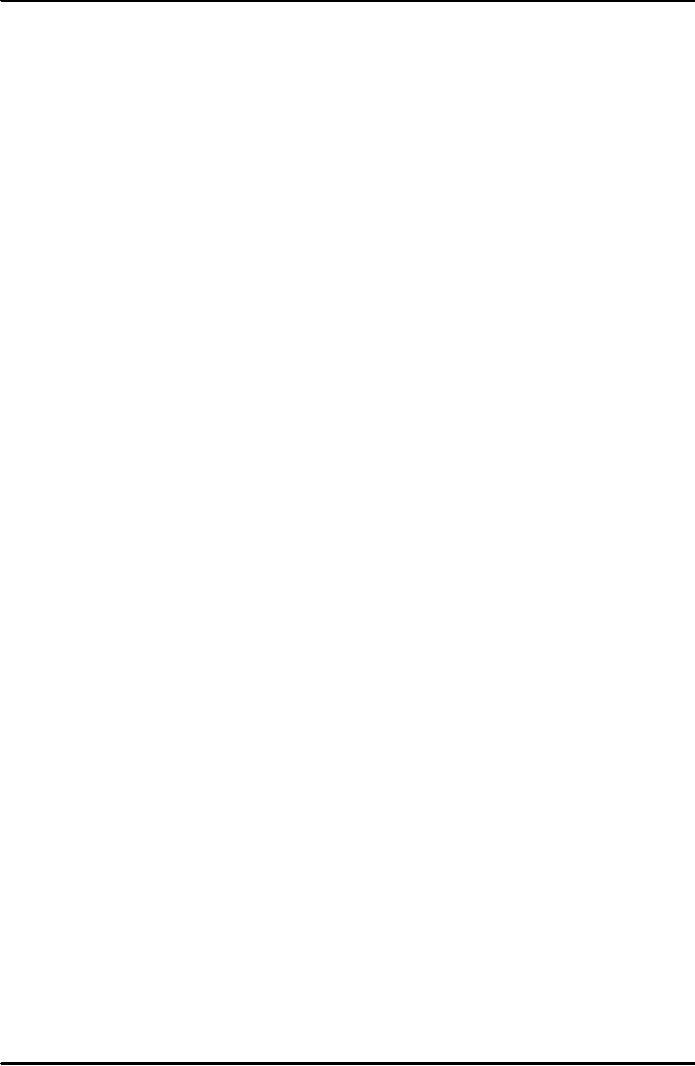
Change
Management MGMT625
VU
resources
to its researchers for
working on high-risk products
with a potential for high
payouts.
Dow
Corning and General Electric
engage in joint projects
with customers to develop
new
products.
(b)
No formal strategy for
entrepreneurship
Gifford
Pinochet makes a distinction
between the intrapreneur and
the entrepreneur.
Specifically,
an intrapreneur is a person who focuses on
innovation and creativity and
who
transforms
a dream or an idea into a profitable
venture by operating within
the organizational
environment.
In contrast, the entrepreneur is a person
who does similar things,
but outside the
organizational
setting. Entrepreneurs have
the ability to see an
opportunity; to obtain
the
necessary
capital, labor, and other
inputs; and to put together an
operation successfully.
They
are
willing to take the personal
risk of success and
failure.
Organizations
that have entrepreneurial
like orgonomics or attributes
develop ability to
see
an
opportunity, willingness to take risk and
commitment to systematic innovation
are
progressive,
dynamic and long lasting
structures. For instance,
When Steve Wozniak could
not
get
his dream of building a small
computer fulfilled at Hewlett-Packard, he
left that prestigious
firm
to form - together with
another entrepreneur, Steve Jobs -
Apple Computer.
Entrepreneurship,
in general, is thought to apply to
managing small businesses,
but some
authors
expand the concept so that
it applies also to large organizations and to
managers
carrying
out entrepreneurial roles
through which they initiate
changes to take advantage of
opportunities.
For instance, Progressive companies, such
as IBM or 3M, consciously try
to
develop
an organizational environment that
promotes entrepreneurship within
the company.
(c)
No vision from the
top
If
the top executive of an
organization is visionless or retained
them on existing level
of
achievements
then organization suffers
immobility, and lacks strategic
direction for long
term
survival
as a very famous English
quotation delegate that
`fish stings from the
head'. An ideal
organization's
leaders or top management
has known about how to
form a plan that
constitutes
a
standard and ordinate it to vision of the
organization. He also has the
ability to compare it
with
the present structure and execute
changes should be made when
possible.
(d)
Lack of commitment from
senior executives
Similarly,
senior executives must be
committed, meaningful and incorporate
with the
objectives,
mission, and purpose of the organization.
They must also have clear
understanding
about
their area or intentional
structure of roles for
better serving in today's
highly infiltrated
environment.
But we have seen different
scenarios in organizations. For
instance, one survey
of
CEOs in Fortune 500 enterprises indicated
that executives spend little
time with lower-level
employees.
Professor Henry Mintzberg, who
previously studied the
activities of executives,
interpreted
the findings as showing that
"management by walking around" is
not very prevalent
in
these large companies. Managers
spend a lot of time with
those who are at
similar
organizational
levels. Yet by wandering around,
managers could obtain a great deal
of
information
not available through formal
communication channels.
(e)
No entrepreneurial role-model at the
top
In
a learning environment, employees at
the lower level learn
from the middle level and
from
95
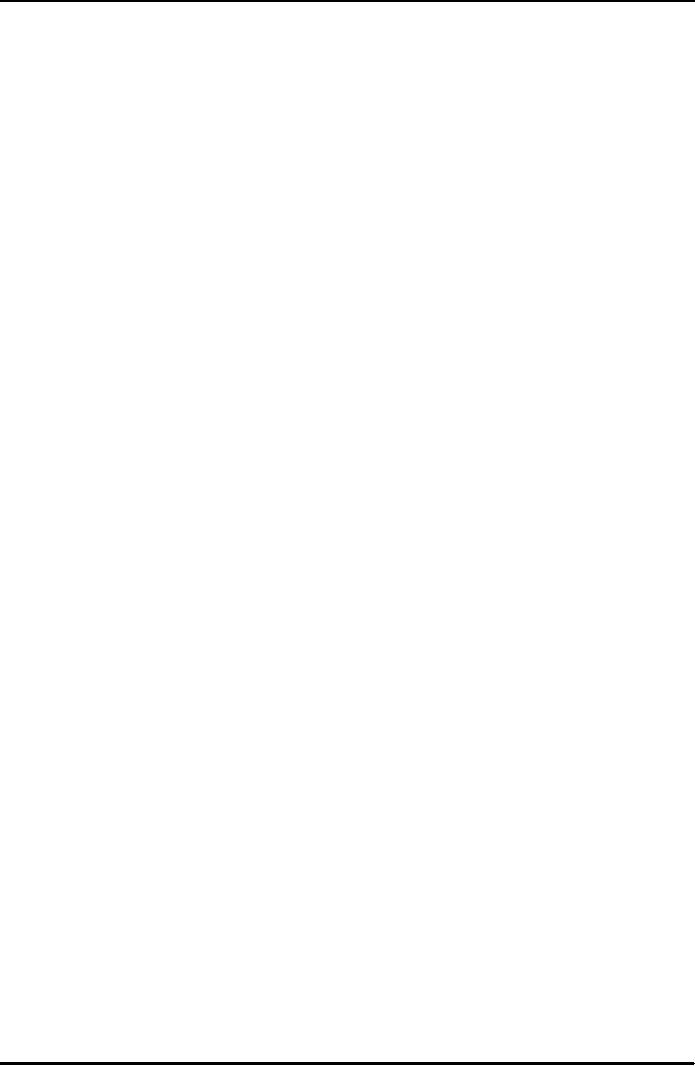
Change
Management MGMT625
VU
the
top level management. If
there are no such role
models in an organization then it
suffers
asymmetry,
communication gaps, and perhaps
leadership vacuum.
Policies
and Procedures
(a)
Long complex approval
cycles
It
is a typical area of Office
Management Study or OM study in
which we analyze
day-to-day
procedures
and conventions in office environment.
For instance, in public sector
organizations
we
have seen that the
approval of a document require dozens of
signature and other
complexities.
So if an organization has this
kind of old and classical
system that creates
problem
of efficiency, effectiveness and disorder
in organizational outcomes.
(b)
Extension documentation requirements
(even problem with
iso-9000)
Over-documentation
is other hindering phenomena
that affect the efficiency
and effectiveness
in
an organization. This is even
not a local phenomenon in
developing countries' business
and
organizational
environments but at international
level too. For instance,
ISO certifications
require
documentation over documentation
that creates an abnormality in
organizations. This is
because
we are overly relaying on
visibles rather than on
invisibles that led an
organization to
mechanistic
and spiritless structure. The
point here is that every
organization should
determine
its
own formality and informality
levels according to their
operational size and industry
norms.
(c)
Over-reliance on established rules of
thumb
It
means the over-reliance on
past patterns experiences, norms, and
conventions. This approach
creates
hindrance to value-addition and
creativity and makes an organization a
stagnant body.
(d)
Un-realistic performance
criteria
The
unachievable or unrealistic performance
criteria also create constraint
during
implementation
of strategic change. This thing
creates de-motivation in
organizations.
96
Table of Contents:
- COURSE ORIENTATION:Course objectives, Reading material, Scope of the subject
- BENEFITS AND SIGNIFICANCE OF CHANGE MANAGEMENT:Traditional management domain
- KURT LEWIN MODEL: ASSUMPTIONS AND IMPLICATIONS:Change Movement, Refreeze
- IMPLICATIONS OF KURT LEWIN MODEL:Sequence of event also matters, A Critical Look
- SOME BASIC CONCEPTS AND DEFINITIONS:Strategic change, Logical incrementalism
- TRANSACTIONAL VS. TRANSFORMATIONAL LEADERSHIP:Micro-changes, Organisation Development
- THEORIES OF CHANGE IN ORGANISATIONS
- LIFE CYCLE THEORY:Unit of Change, Mode of change, Organisation death
- TELEOLOGICAL THEORIES OF CHANGE:Unit of change, Mode of Change, Limitations
- DIALECTICAL THEORIES OF CHANGE:Unit of Change, Strategic planning
- A DIALECTICAL APPROACH TO ORGANISATIONAL STRATEGY AND PLANNING:
- LIMITATION OF DIALECTICS; DA AND DI:Overview of application of dialectics
- THEORIES OF CHANGE IN ORGANISATIONS
- APPLICATION OF EVOLUTIONARY THEORY:Managerial focus
- FURTHER APPLICATION OF EVOLUTIONARY THEORIES:Criticism
- GREINER’S MODEL OF ORGANISATIONAL– EVOLUTION AND REVOLUTION
- GROWTH RATE OF THE INDUSTRY:CREATIVITY, DIRECTION, DELEGATION
- COORDINATION:COLLABORATION, The Crisis
- ORGANISATION ECOLOGY:Structural Inertia, Internal Structural Arrangements, External Factors
- CLASSIFICATION OF ORGANIZATIONAL SPECIES:Extent of Environmental Selection, Determinants of Vital Rates,
- FOOTNOTES TO ORGANISATIONAL CHANGE:Stable Processes of Change, Rule Following, Conflict
- SOME COMPLEXITIES OF CHANGE:Superstitious Learning, Solution Driven Problems
- ORGANIZATIONAL ADAPTATION:The Entrepreneurial problem, The Administrative Problem
- PROSPECTORS:Analyzer, Reactors, Adaptation and Strategic Management
- SKELETAL MODEL OF ADAPTATION:Determinants of Adaptive ability, The Process of Adaptation
- STRATEGIC CHANGE:Nature of Change, The Importance of Context, Force field Analysis
- Management Styles and Roles:Change Agent Roles, Levers for managing strategic Change
- SYMBOLIC PROCESSES:Political Processes, COMMUNICATING CHANGE, Change Tactics
- STRATEGIC CHANGE:Pettigrew & Whipp’s Typology, Context on X-axis (Why of change)
- STRATEGIC CHANGE:Attributes of SOC Model, Implications for Management
- STRATEGIC CHANGE:Flow of Information, Recruitment, SOC Process
- Determinants of a Successful Change Management:Environmental, Management Orientation, Management Orientation
- Higgins 08 S Model – An Adaptation from Waterman’s Seven S model:Strategy, Systems and Processes, Resources
- IMPLEMENTATION AND STRATEGIC CHANGE: CONSTRAINING FORCES IN THE IMPLEMENTATION OF STRATEGIC CHANGE (CASE STUDY OF XYZ COMPANY)
- IMPLEMENTATION AND STRATEGIC CHANGE: CONSTRAINING FORCES IN THE IMPLEMENTATION OF STRATEGIC CHANGE (CASE STUDY OF XYZ COMPANY)
- WHY IMPLEMENTING STRATEGIC CHANGE IS SO DIFFICULT?:Change Typology, Technical Change
- IMPLEMENTATION APPROACHES:Attributes of incremental change,
- IMPLEMENTATION: RADICAL OR TRANSFORMATIVE CHANGE
- IMPLEMENTATION: RADICAL OR TRANSFORMATIVE CHANGE:Definition of Leadership, Follower Work Facilitation
- IMPLEMENTATION: RADICAL OR TRANSFORMATIVE CHANGE:Recognize the challenge
- IMPLEMENTATION: RADICAL OR TRANSFORMATIVE CHANGE
- IMPLEMENTATION: PUNCTUATED EQUILIBRIUM MODEL:Features of Radical Change, Theory of P-E model
- CHANGE IMPLEMENTATION: OD MODELS:The Transactional Factors
- CULTURE, VALUES AND ORGANIZATIONAL CHANGE:Significance and Role of Values, Values Compete
- ORGANIZATIONAL VALUES, CULTURE AND ORGANIZATIONAL CHANGE:Issues in Change Management